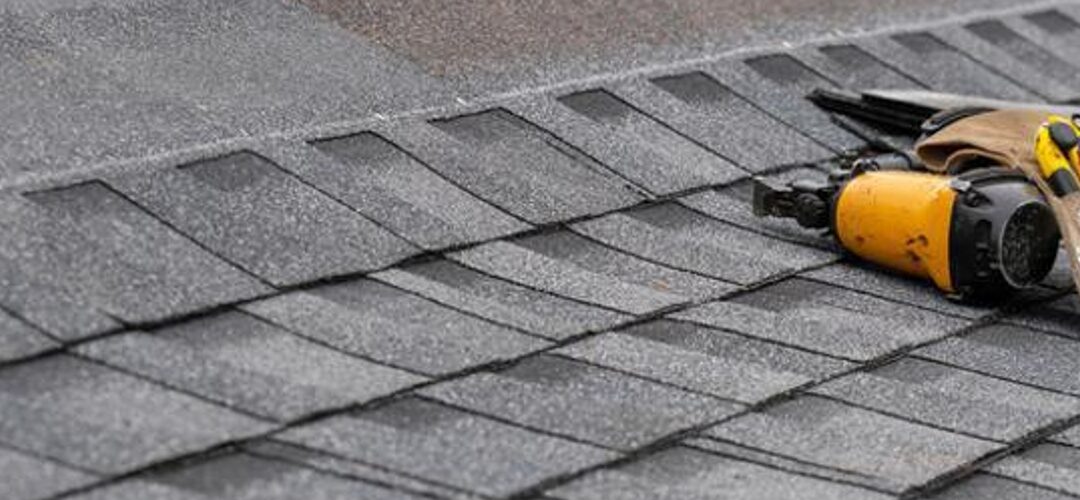“What is a shingle roof?” you may ask. The simple explanation is that it is a shingle-covered roofing system. Shingles are flat, rectangular pieces of asphalt, composite, or other roofing material laid from the roof’s base upwards and frequently overlap to ensure complete coverage.
However, there is much more to shingle roofing than this simple definition, and in this article, we will cover all, including the roofing labor cost per square.
When asphalt shingles first became popular in the early 1900s, they came in only two colors: green and black. Asphalt shingles are now available in various hues, from classic black to natural earth tones and contemporary reds, blues, and greens. Modern shingle roofing can also be elegantly textured to seem like slate, wood, or tile, making the roof more secure and low-maintenance without compromising style.
When Do You Need a New Shingle Roof?
A damaged, worn, or structurally deficient roof can lead to additional issues such as moisture damage, bug invasions, and greater energy expenses. With that in mind, you won’t want to put it off when the time comes to replace it. Here are the primary indicators that you require a new roof.
1. The Roof Is Worn
Your roof’s life expectancy is determined by the material used, and you should begin planning for the expense of a roof replacement once yours has reached the end of its life. Asphalt and wood shingles have a lifespan of 20 to 30 years, with high-quality asphalt shingles lasting up to 50 years. Metal roofs are more durable than shingles, lasting 40 to 80 years.
2. There Has Been Widespread Damage
A few cracked, peeling, or broken shingles (or missing shingles) may not always indicate the need for a new roof. If the roof is otherwise in good condition, replacing the shingles in question may be all that is required; however, if you’re noticing wear and tear throughout, it’s likely time to start arranging for a replacement. Saggy and droopy places are especially worrying since they suggest that your roof’s support decking is weakened, so you’ll need to repair it immediately.
3. Light Filters Through the Attic
Examine your attic area if you’re unsure whether you need to replace your roof. Is sunlight filtering through the roof boards? If this is the case, your roof is most certainly nearing the end of its useful life.
4. Your Energy Bill Is Increasing
You may need to inspect your roof if you’ve observed an increase in your home’s energy expenditures. Poor insulation indicates a failing roof, which could result in valuable air cooling or heat loss. If your power cost increases for no apparent reason, you may need to repair some or all of your roof.
5. Moisture Problems Have Been Identified
Moisture damage is a common sign of a faulty roofing structure, although not all water damage indicates a leaking roof. You may need to investigate whether the problem is caused by a roof or window leak or a broken chimney or siding. The following are the most prevalent roof-specific moisture signals to check for:
- Roof stains caused by water
- Attic insulation containing moisture
- In the attic, there is condensation or heavy frosting
- The chimney flashing has rusted
Existing Roof Removal
On average, expect to spend roughly $1,250 to pull down an existing roof before installing a new one. This portion of the project normally costs $1 to $5 per square foot or $1,000 to $1,500 on average. Your contractor may charge you individually for removal, but it’s also customary to include it in the overall cost of a roof replacement. They will enter your details in a roof replacement cost calculator for an exact amount.
Several elements can affect the cost of removing your present roofs, such as the labor cost to shingle a roof, the materials, time, and square footage. More layers of underlayment and heavier materials usually result in higher labor costs. There may also be fees for dumpster rental or disposal of outdated materials. Asphalt shingles, which some municipalities consider to be a dangerous building material, may be used.
While the average cost to tear off and replace a roof depends on various indicual factors, know that it is roughly half the price to replace a roof yourself as it is to hire a professional roofer. So, while new roof costs vary depending on the above reasons, you should expect to pay nearly half the national average cost of $9,081 if you DIY.
However, the possibility of unexpected (and perhaps devastating) costs is exceedingly high for any undertaking. For example, unless you’re a licensed roofer, your insurance provider will unlikely cover you for roof repairs or replacement. Hiring a contractor usually comes with a warranty, whereas doing the work yourself puts the onus on you to get it correctly the first time. For all of these reasons and more, we strongly advise you to use a local roofing contractor for your roof replacement with a precise shingle roof cost calculator so that you can ensure the project is done safely and correctly.
Related Blog Posts:
- How Long Does the Restoration Process Take for Homes With Water Damage?
- What to Do If Your Home Has Water Damage?
- Signs of Water Damage in the Basement Walls
- Water Damage & Mold: Everything You Need To Know in 2023
- Things You Should Know About Water Damage
- Who Do I Call After My House Has Water Damage Restore?
- What Causes Water Damage to Floors and Walls
Related Services:
Our service areas:
Get A Free Estimate

